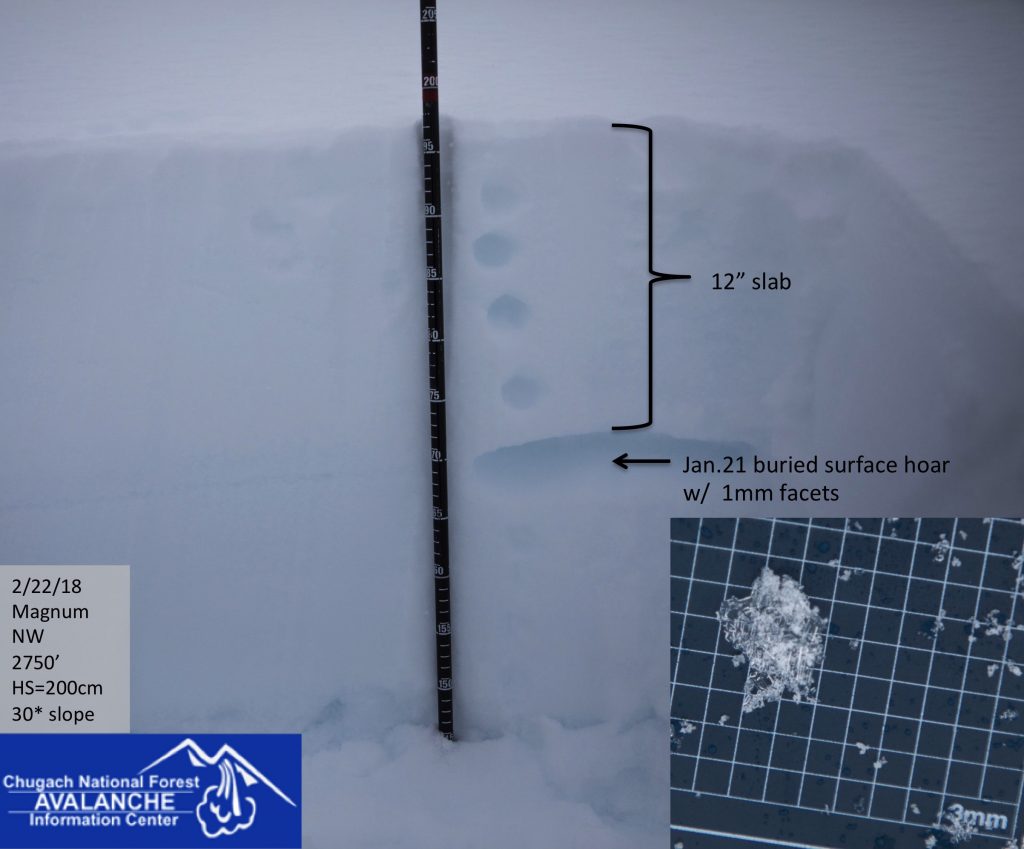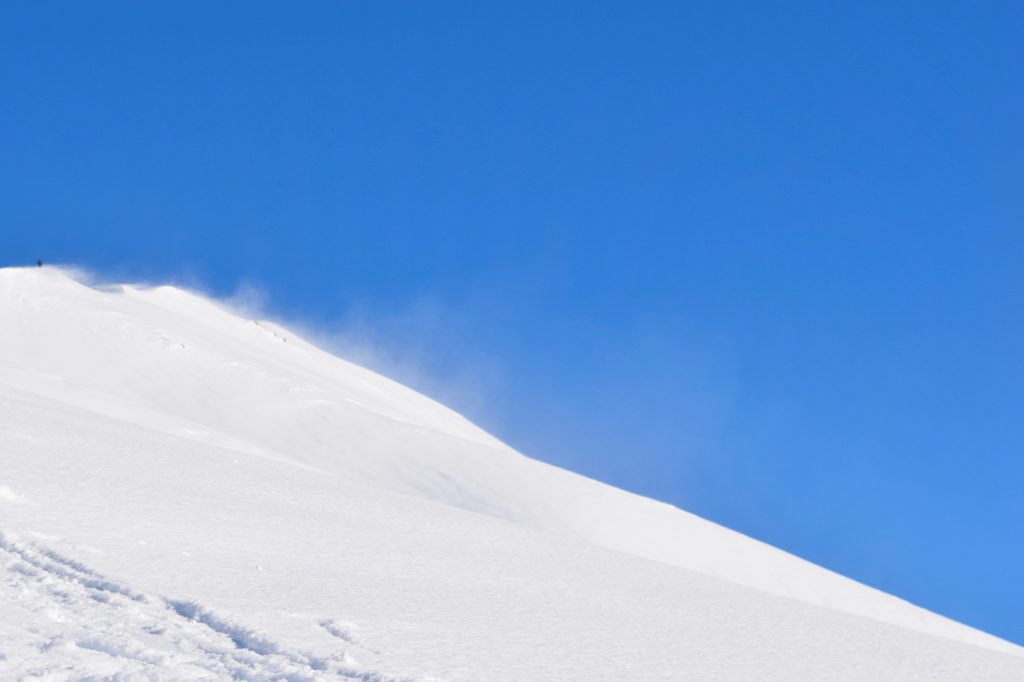Triggering a slab avalanche 1-2+ feet deep remains possible above 1000’ due several weak layers buried within the snowpack. A layer of buried surface hoar from Jan. 21st continues to show signs of reactivity in the upper elevations, and a layer of facets over a melt-freeze crust is suspect in the mid elevation band. The slab ranges from hard to soft depending on exposure to recent winds. Speaking of wind… yesterday we had 3-4” inches of new snow combined a strong Northwest winds overnight. This wind direction can funnel through Turnagain Pass from a variety of directions causing unusual wind loading patterns. Be suspect of hard snow over soft snow that feels upside down or where the slab is fully supportable or hollow sounding. Red flags like shooting cracks or “whumpfing” may not be present before a slope releases. Evaluate the terrain for consequences and be aware of places that haven’t seen much traffic. These less traveled places are more suspect for triggering a more connected slab.
Deep Persistent Slabs: Keep in mind that there are deeper persistent layers that could ‘wake up’ if you find the wrong spot above 3,000′ in the Alpine. At these high elevations, old weak layers of facets and buried surface hoar sit in the bottom half of the snowpack. This structure is most pronounced in places with a thin overall snow cover, such as the South end of Turnagain Pass, the Summit Lake area and Crow Pass.
Left picture shows the buried surface hoar about a 1′ below the surface, and the right hand picture is an example of the weak faceted snow sitting on a slick crust in the mid elevations.





